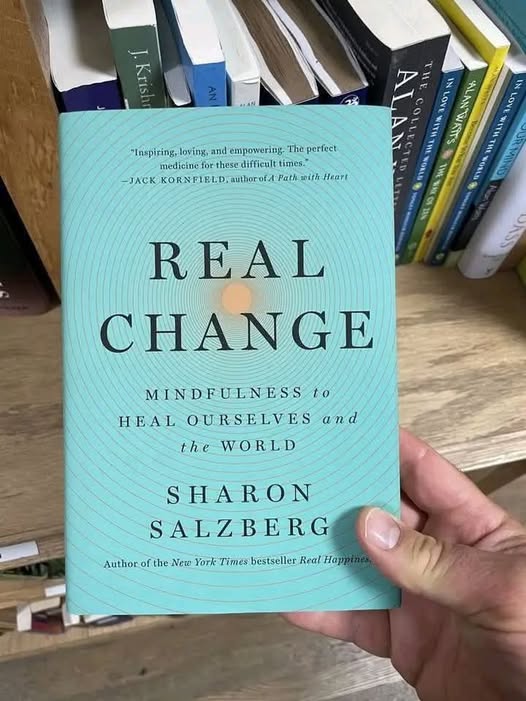Summary
Real change is not just about surface-level improvements or temporary fixes; it is about deep, lasting transformation. Whether in personal growth, relationships, or society, meaningful change requires commitment, self-awareness, and action.
This article explores what real change looks like, why it is difficult, and how to implement it in different areas of life. It covers key principles such as self-reflection, breaking bad habits, embracing discomfort, and staying consistent. Real change doesn’t happen overnight, but with determination and the right mindset, it is possible to create a better future for yourself and others.
Introduction
Change is one of the most challenging yet necessary parts of life. Many people want to improve their lives—whether by developing healthier habits, achieving personal goals, or making an impact on society. However, real change is not just about setting goals; it’s about shifting mindsets, breaking patterns, and taking consistent action.
We often resist change because it feels uncomfortable or overwhelming. But true transformation requires pushing past these feelings and committing to long-term growth. In this article, we’ll explore what real change means and how to make it a reality in our lives.
1. Understanding the Nature of Real Change
What is Real Change?
Real change goes beyond temporary adjustments. It is:
✔ Deep and meaningful – A shift in mindset and behavior, not just a quick fix.
✔ Sustainable – Something that lasts over time, not a short-lived effort.
✔ Intentional – Requires conscious effort and decision-making.
Example:
A person who wants to be healthier might start a diet but quickly go back to unhealthy habits. Real change happens when they shift their mindset, create lasting habits, and adopt a sustainable lifestyle.
2. Why Real Change is Difficult
Many people struggle with change because:
✔ Fear of the unknown – Change can feel uncertain and scary.
✔ Comfort in old habits – Even bad habits feel familiar and safe.
✔ Lack of patience – People want instant results but real change takes time.
How to Overcome Resistance to Change:
- Acknowledge your fears – Understand what is holding you back.
- Break it down – Start with small, manageable steps.
- Stay committed – Push through discomfort and setbacks.
Example:
If you want to improve your confidence but fear public speaking, start small—practice speaking in front of friends before presenting to a large audience.
3. The Power of Self-Reflection in Creating Change
Change starts with self-awareness. You can’t improve what you don’t understand.
How to Practice Self-Reflection:
📝 Journaling – Write about your thoughts, emotions, and behaviors.
🔍 Asking for feedback – Learn from others’ perspectives.
🤔 Examining patterns – Identify recurring behaviors that hold you back.
Example:
If you struggle with time management, reflecting on how you spend your day can reveal distractions or unproductive habits.
4. Breaking Bad Habits and Creating New Ones
Your habits shape your life. To create real change, you must replace bad habits with good ones.
Steps to Break a Bad Habit:
1️⃣ Identify triggers – What situations lead to the habit?
2️⃣ Replace the habit – Find a healthier alternative.
3️⃣ Stay accountable – Track progress and seek support.
How to Build New Habits:
✔ Start small – Begin with one manageable change.
✔ Be consistent – Repeat the action daily.
✔ Reward progress – Celebrate small wins.
Example:
If you want to read more but always scroll on your phone, replace your phone time with 10 minutes of reading each day.
5. Embracing Discomfort: Growth Comes from Challenges
Change is uncomfortable, but growth happens outside of your comfort zone.
How to Get Comfortable with Discomfort:
🔥 Shift your mindset – See challenges as opportunities, not obstacles.
🔥 Push past fear – Do things before you feel “ready.”
🔥 Take small risks – Challenge yourself little by little.
Example:
If networking makes you nervous, start by introducing yourself to one new person at an event instead of avoiding it completely.
6. The Role of Consistency and Discipline
Motivation fades, but discipline keeps you going.
How to Stay Consistent:
📅 Create a routine – Set specific times for new habits.
📊 Track progress – Use a habit tracker or journal.
🎯 Stay patient – Accept that results take time.
Example:
If you’re learning a new skill, practicing for 15 minutes every day is more effective than practicing for hours once a month.
7. Making a Positive Impact: Changing the World Around You
Real change isn’t just personal—it extends to the world.
Ways to Make a Difference:
💡 Lead by example – Show the change you want to see.
🤝 Support others – Help those struggling with their own growth.
🌍 Get involved – Join causes or projects that align with your values.
Example:
If you want a kinder society, practice deep kindness in daily interactions and encourage others to do the same.
8. Common Myths About Change (and the Truth Behind Them)
🚫 Myth: Change happens overnight.
✅ Truth: Real change takes time and effort.
🚫 Myth: You need to be highly motivated.
✅ Truth: Motivation helps, but discipline is more important.
🚫 Myth: If you fail, you should give up.
✅ Truth: Failure is part of growth. Keep going.
Final Thoughts
Real change is possible for anyone willing to put in the effort. It requires self-awareness, commitment, and the willingness to embrace challenges. By breaking bad habits, building better ones, and staying consistent, you can transform yourself and make a positive impact on the world.
The journey won’t always be easy, but the rewards of real change—growth, confidence, and fulfillment—are worth it. 🌟
